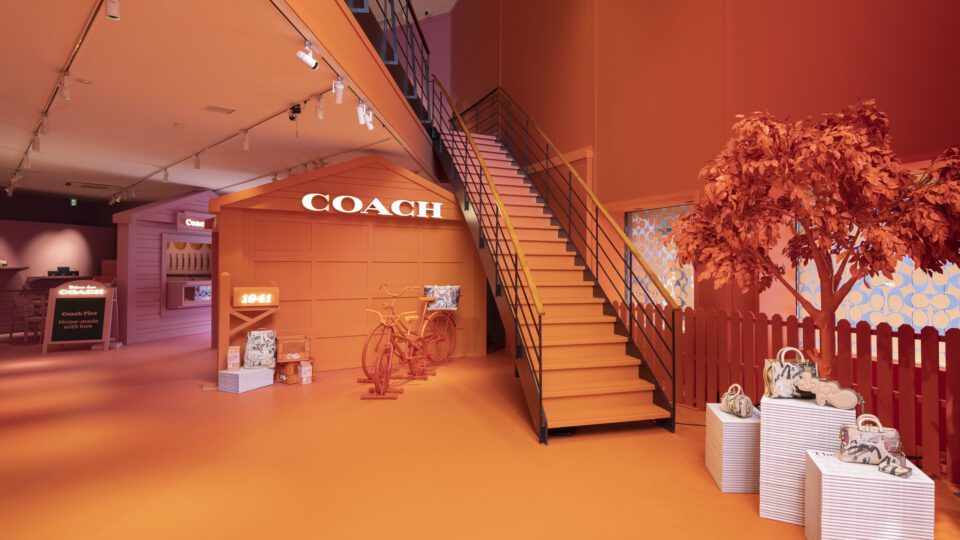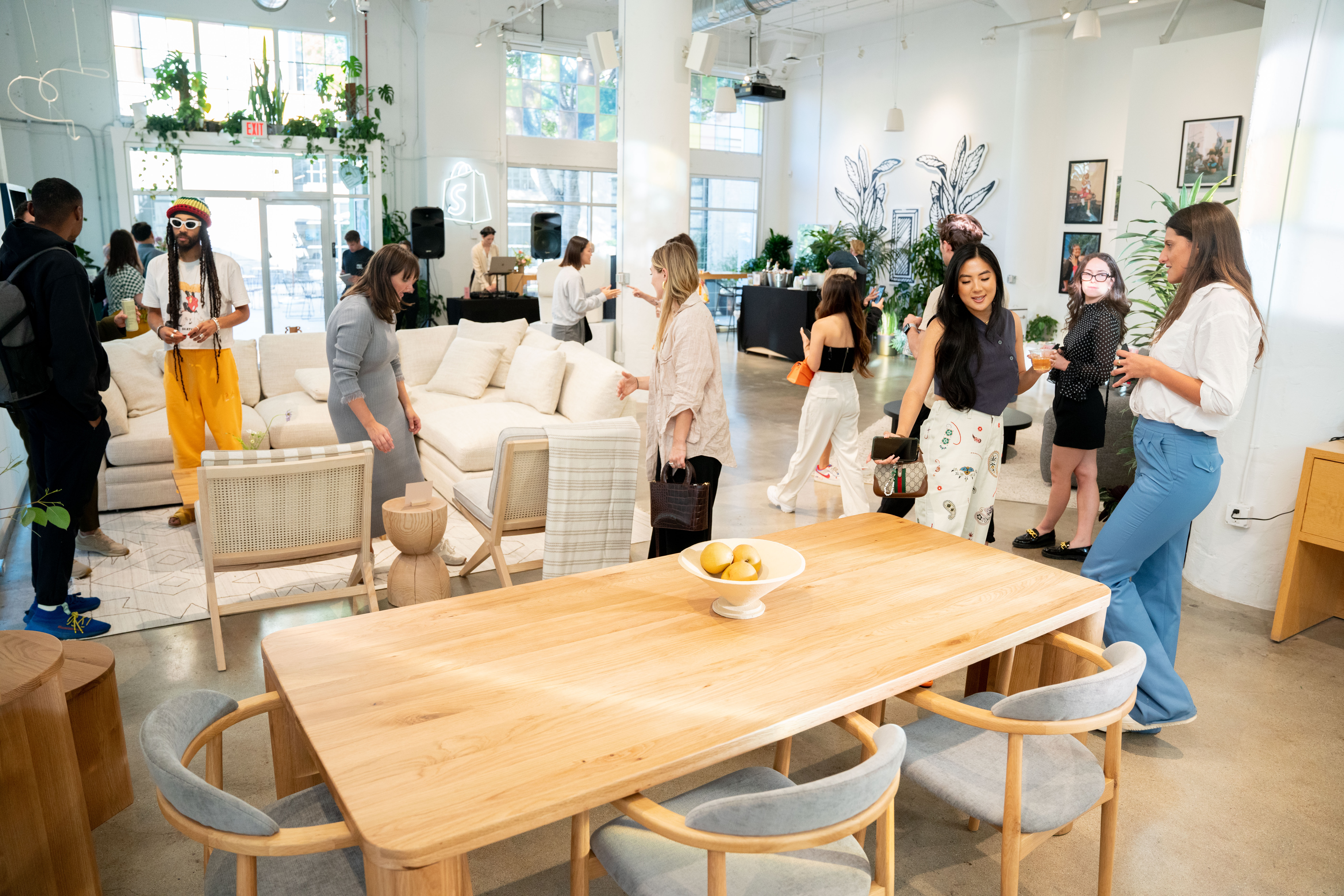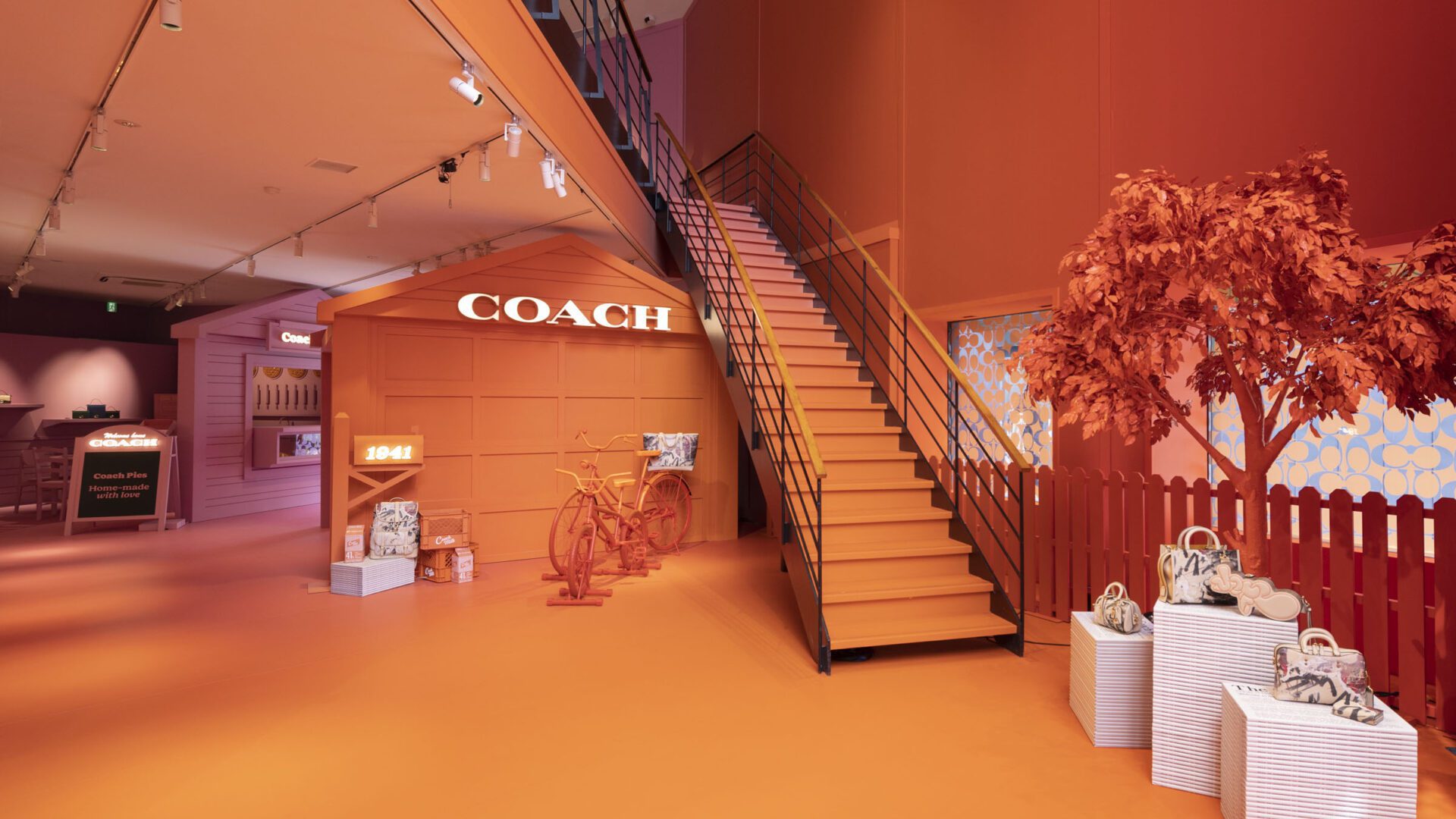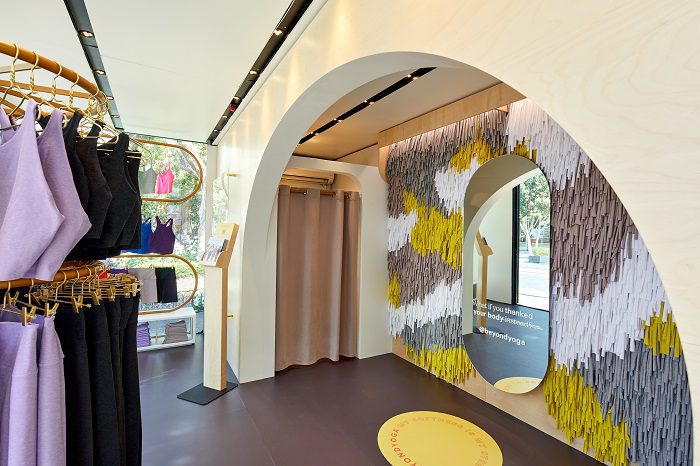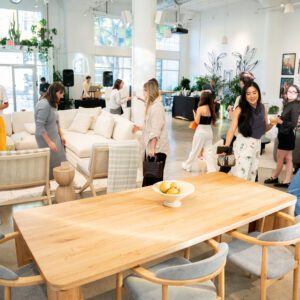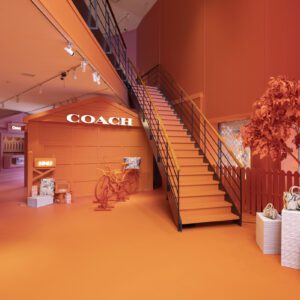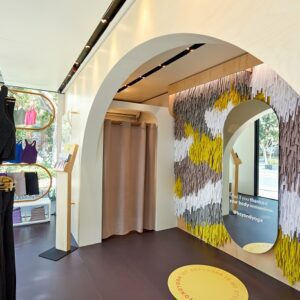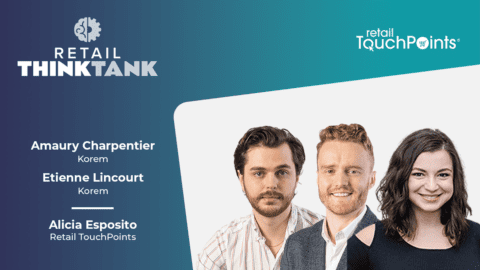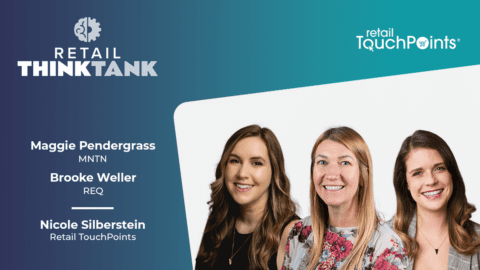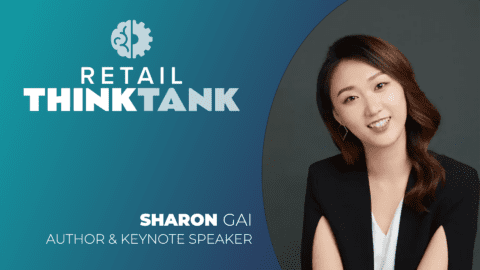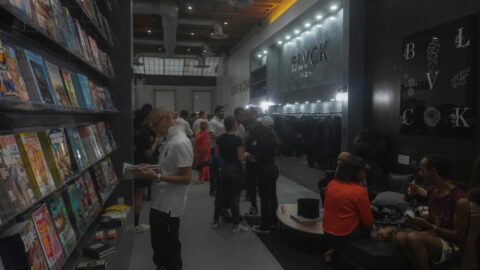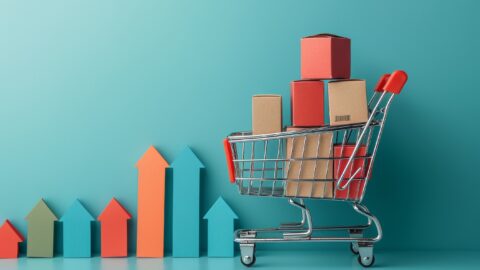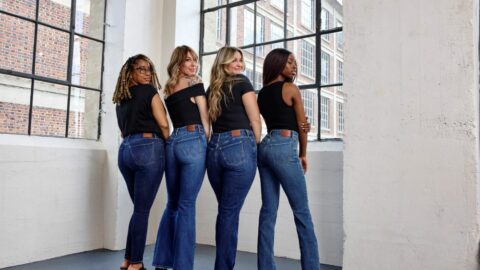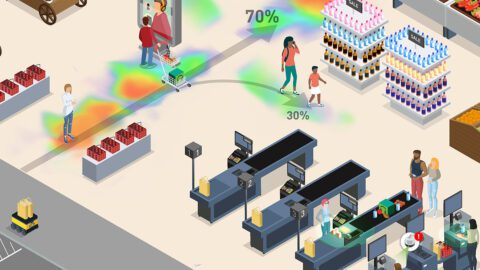Despite their temporary nature, pop-up shops are intended to make a lasting impression on visitors through offering extraordinary consumer journeys. These spaces are meant to provide experiences that are supported by a brand’s values, in addition to serving as a launchpad for new products, innovations or ideas.
While trends change frequently, there are foundational elements of retail strategy that every brand must consider to successfully design a pop-up experience. The cornerstone of every pop-up design strategy must be focused on the target customer.
“One thing that is consistent through all of our pop-ups is the consumer journey,” said Giovanni Zaccariello, SVP of Global Visual Experience at Coach in an interview with Retail TouchPoints. “My team and I always think about it from 10 feet, 7 feet, 3 feet and 1 foot. What are you going to see from that far away?”
The Basics of Building a Pop-Up Strategy
Designing an alluring pop-up experience requires a brand to identify the goals and expectations for the space. Promotions and merchandising must be part of the specific messaging to establish the intent of the pop-up shop.
Advertisement
“There should be a clear message,” said Melissa Gonzalez, Founder of The Lionesque Group and Partner at MG2 in an interview with Retail TouchPoints. “Is there a seasonal aspect? Are you here to show your latest fall and winter look? It should align with the message of the store.”
By identifying the reasons for a pop-up to exist, brands are able to create meaningful messaging that serves a purpose. Customers will then engage with brands at a deeper level rather than simply having a shopping experience that could be found at a traditional brick-and-mortar store. When cultivating the messaging for a pop-up experience, brands must:
- Identify the preferred type of pop-up, such as seasonal or innovative;
- Align design elements with the pop-up shop’s purpose;
- Develop marketing initiatives through activations and promotions surrounding the pop-up launch;
- Train staff to contribute to the customer journey; and
- Pinpoint opportunities to sell beyond the pop-up experience.
After identifying a purpose for planning a pop-up experience, Mardi Najafi, VP of Retail Strategy and Design at FIGUR3 leads brands through the early planning stages.
“[We] dissect the brief and setup a workshop to share best in class strategies in similar product/service launch/ competitive landscape,” Najafi said in an interview with Retail TouchPoints. “Often, clients don’t know what’s possible; we push the boundaries to create something spectacular within budget and timeline.”
Preparing to Pop-Up Through Smart Planning
Pop-up fails can waste precious time, energy and money, but brands typically only learn these lessons through trial and error. By taking the advice of experts who have extensive experience producing successful pop-up stores — and might have failed initially but learned from these errors — brands can develop solid strategies that include task delegation, unique concepts and adherence to the budget.
Great design leaders often want to do it all and face challenges of delegating responsibilities to other team members. When one person takes on too much, particularly those on the creative side who have a specific design vision, the entire team suffers through disorganization and the project is more likely to fail.
To create a memorable pop-up experience that will resonate with consumers, brands must avoid copying from other companies. In the pop-up space, imitation is not only frowned upon, but it also takes a concept that was once alluring in its original form and waters it down.
“We’re in a place where there’s so much creativity out there,” said Zaccariello. “And I don’t think some big brands are using it but are stuck in how things are done. It’s about time now to really open up our brains and get inspired.”
Many creatives who lead pop-up design have a beautiful, grand idea that they often view as the starting point rather than the destination. When executed properly, these visions can create a standout pop-ups, but without a realistic budget, they can spell financial disaster. Before making common budgeting mistakes, Gonzalez notes that brands should recognize the financial pitfalls often associated with pop-up projects and avoid:
- Accepting the lowest cost without outlining pop-up goals;
- Enlisting resources that are presented as free, but will wind up creating problems; and
- Ignoring financial guidelines and only prioritizing creativity.
“[Budget for] rent, the fee for your partner who is going to design and build it and production budget — some people line item it,” Gonzalez said. “That’s important to understand, because as you’re assessing what part of the scope we can take on versus what we need to do, we need to have budget allocation for that. Also, the budget staffing and operation usually get line itemed out separately than production. It’s dependent on the duration of the ongoing investment. With marketing, this is where you can probably be really savvy and tap partnerships, but you do want to have some budget allocation for that.”
Growing Brand Messaging Through Unique Pop-up Design
In June 2022, Beyond Yoga launched its first pop-up shop at The Grove in the brand’s home city of Los Angeles. Following the 2021 acquisition of Beyond Yoga by Levi Strauss & Co., the digitally native activewear brand is positioned for growth and used the pop-up experience to introduce customers to a branded brick-and-mortar experience.
“It was incredibly important for us to have what we stood for represented in the pop-up: the size inclusivity, the softness of the brand and the strength behind the softness,” said Kori Whitaker, Head of Stores at Beyond Yoga in an interview with Retail TouchPoints. “When you looked at the pop-up, it was our messaging but it was also how we merchandised. We had an art wall where you could feel the softness. We are soft but we’re strong. We can bend but we don’t break.”
Following the close of the monthlong pop-up shop, Whitaker took lessons from the experience and channeled them into the final stages of planning for Beyond Yoga’s first permanent brick-and-mortar location in Santa Monica, Calif. The brand hosted its grand opening Sept. 28 and incorporated elements from the pop-up into its merchandising and building upon the art installation for its design to relay its core messaging.
“We learned from the pop-up that extended sizes were incredibly important to the in store experience and we were able to then turn into the brick and mortar and create an entire area in the store just for that experience,” said Whitaker. “We [also] have this beautiful living willow tree in the middle of the Santa Monica store. It’s almost like an art museum. You just sit there and you look at the beautiful colors on the wall. But we chose a willow tree because it bends but it doesn’t break.”
Home furnishings and accessories brand Sundays launched a Los Angeles pop-up experience Sept. 22-Oct. 9, 2022 through a partnership with Shopify at the ROW DTLA. This L.A. pop-up shop was an opportunity for Sundays, a Canadian brand, to build upon the momentum from a New York City pop-up earlier in the summer when it celebrated its U.S. launch. Co-founder Barbora Samieian recognized the opportunity to connect with Southern California consumers who are easily served by the company’s Los Angeles warehouse.
“We showed that breadth of products that that feels curated, cohesive,” said Samieian in an interview with Retail TouchPoints. “Logistically, it made sense and also for speed of how fast we could deliver to our customers. Just seeing attraction in sales, California seems to be resonating with the Sunday’s brand and our product. We’ve had some good organic engagement on our social channels.”
When designing for a Coach pop-up to celebrate seasonal experiences that align with the release of a collection, Zaccariello has been known to begin planning eight to 10 months in advance, according to the fashion calendar. When designing pop-up experiences for Coach based on innovation, however, planning might occur under a tighter turnaround time. Zaccariello has adopted a global local, or ‘glocal,’ approach for a uniquely local design perspective on how to execute the brand’s temporary shops that are hosted around the world.
“We have our regional leads in China, Japan or Singapore that say ‘Hey, there is this amazing space, what can we do there?’” said Zaccariello.
The Coach team recently launched its ‘Somewhere in America’ installation in Japan to complement its fall runway show. While shopping is a component of the pop-up experience, it is not the main attraction.
“In the pop-up you want to transport your customers into a different place right, into a different reality,” said Zaccariello. “So shopping is part of that but it’s not at the top of the pyramid when we design it.”
Through designing a suburban American space abroad, Coach introduced its interpretation of this way of life to the Japanese consumer through a weeklong experience that included musical performances and a Coach bakery that sold American-style cakes and pies. Coach will now ride the success of the pop-up in Japan as it introduces the Somewhere in America concept to a new customer in Seoul, South Korea at a mountainside house.
Focusing on the consumer journey to develop pop-up goals will position brands for success in this space and afford insights into consumer demand and behavior that aren’t available through any other channel.
“What we learned from such a short period of time was what an assortment should look like, what fixturing should look like, what the music should sound like,” said Whitaker. “It is invaluable. You can learn from the customer and from the associate when they’re standing in a space. I’ve had experiences with companies that put millions into profiling who their customer is and all you have to do is show up to them and listen to them. You’ll find out who they are.”



